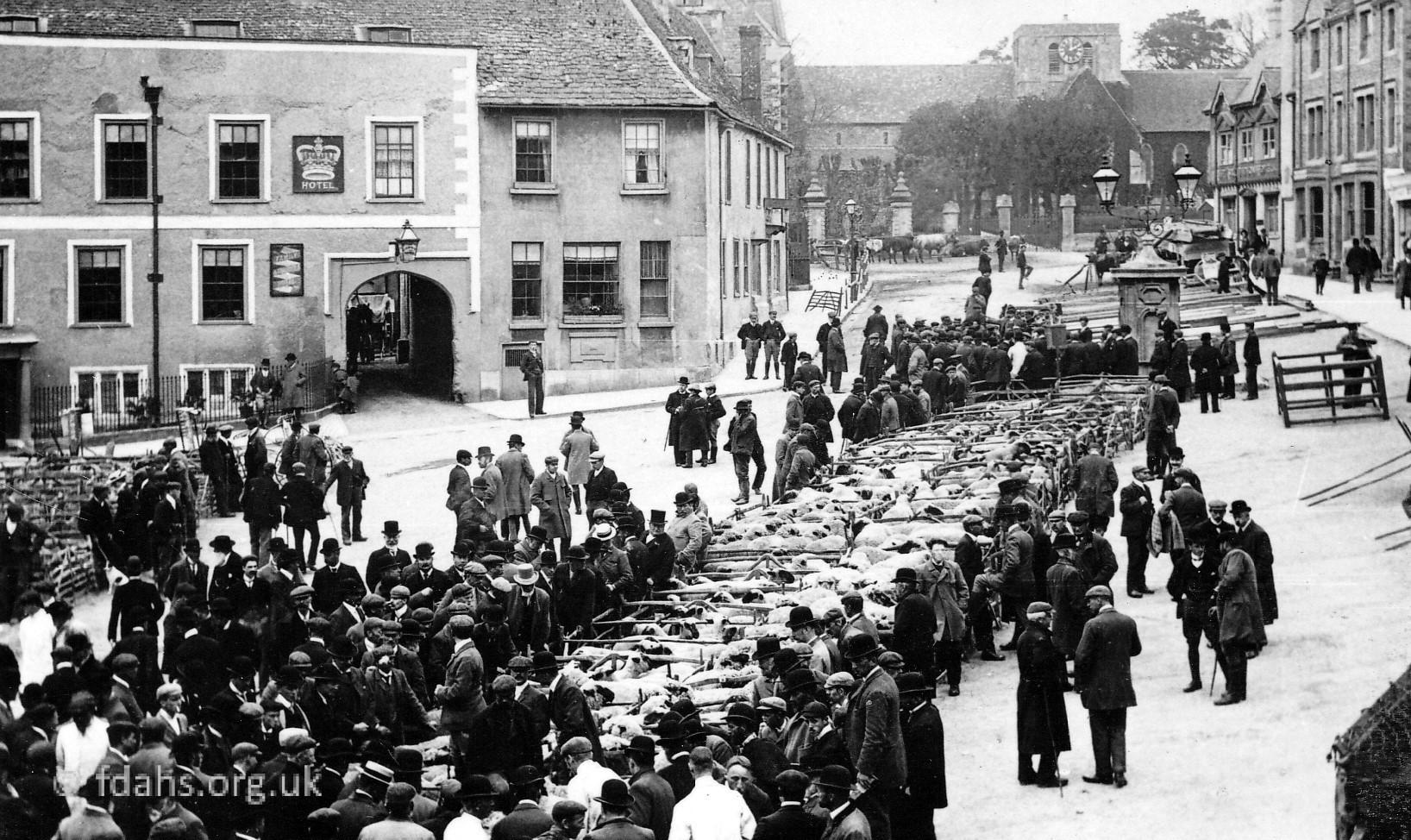There were many! The century started off with the Napoleonic Wars (1803–1815) against the French Empire. Then there were wars with the USA, China, and Russia to name but a few. There were also many skirmishes and uprisings throughout the British Empire to keep our soldiers very busy. For example, the Indian Mutiny of 1857 and the very bloody war fought against the Zulu Kingdom in South Africa in 1879. What little information there is to be found concerning these times and its relevance to Faringdon has been collected here.
Faringdon Rifles Volunteers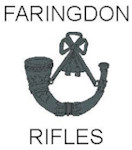
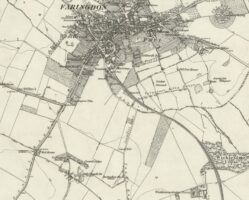 A ‘Volunteer Rifle Range’ and ‘Butts’ are marked on this 1876 map of Faringdon. This was where volunteer soldiers used to practise firing at the ‘butts’ that were placed at the top of Jasper’s Hill. It was still being used by the volunteers in WWI.
A ‘Volunteer Rifle Range’ and ‘Butts’ are marked on this 1876 map of Faringdon. This was where volunteer soldiers used to practise firing at the ‘butts’ that were placed at the top of Jasper’s Hill. It was still being used by the volunteers in WWI.
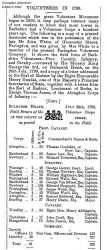 During the French Revolution (1789-1799) and the rise to power of Napoleon Bonaparte at the end of the eighteenth century, Great Britain was faced with a possible invasion. In 1793, Parliament passed an Act sanctioning the raising of volunteer corps in towns for their local defence, which could include infantry and cavalry battalions. This article in the Faringdon Advertiser shows that there was a Berkshire Volunteer Corps in existence by 1799 with an infantry totalling 785, which included 40 men and 4 officers from the Faringdon area under Captain William Ward.1
During the French Revolution (1789-1799) and the rise to power of Napoleon Bonaparte at the end of the eighteenth century, Great Britain was faced with a possible invasion. In 1793, Parliament passed an Act sanctioning the raising of volunteer corps in towns for their local defence, which could include infantry and cavalry battalions. This article in the Faringdon Advertiser shows that there was a Berkshire Volunteer Corps in existence by 1799 with an infantry totalling 785, which included 40 men and 4 officers from the Faringdon area under Captain William Ward.1
The corps then probably declined out of existence after 1827 due to government cutbacks. But in the years that followed riots by agricultural workers, the general civil unrest of the period, and fears that Britain might be caught up in a wider European conflict were raising much concern. On 12 May 1859, just 3 years following the end of the Crimean War, the Secretary of State for War, Jonathan Peel issued a circular letter to lieutenants of all the counties in England, Wales and Scotland, authorising the formation of volunteer rifle corps. By 1861, Berkshire had companies in Reading, Windsor (2), Newbury, Abingdon, Faringdon, Wantage, Wallingford, Windsor Great Park, Winkfield, Sandhurst and Woodside.2
The Faringdon company, then known as the 8th Corps, started out as a half company with Lieutenant Daniel Bennett (1823-1887 & Lord of the Manor, Faringdon House) and Ensign George Frederick Crowdy (see below). They were joined by George Henry Maskelyne as surgeon in March 1861 and about that time the 8th Corps was increased to a full company with the two existing officers being promoted.2 George James Haines also joined the company as ensign with commission dated 8 January 1862. George James Haines was recorded at this time as solicitor, clerk to board of guardians, clerk to commissioners of taxes, treasurer to Fyfield and Faringdon turnpike trust, actuary or Savings bank, perpetual commissioner, commissioner to administer oaths, and agent to County fire and Provident life assurance, London street. 3
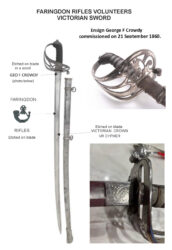 This Victorian sword 5, engraved ‘Faringdon Rifles’ belonged to Ensign George Frederick Crowdy (1819-1895), who was born and raised in Faringdon. He was commissioned on 21 September 1860 at the age of 41. More about his life … Faringdon People.
This Victorian sword 5, engraved ‘Faringdon Rifles’ belonged to Ensign George Frederick Crowdy (1819-1895), who was born and raised in Faringdon. He was commissioned on 21 September 1860 at the age of 41. More about his life … Faringdon People.
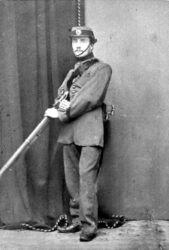 In May 1863 the uniform was defiantly laid down to consist of a dark grey tunic and cap, trimmed with cord of the regimental colour. An Inverness-pattern cloak, black gaiters and black haversack completed the simple outfit which was all that could be afforded when the uniform had to be paid for by the corps itself, without government financial aid.
In May 1863 the uniform was defiantly laid down to consist of a dark grey tunic and cap, trimmed with cord of the regimental colour. An Inverness-pattern cloak, black gaiters and black haversack completed the simple outfit which was all that could be afforded when the uniform had to be paid for by the corps itself, without government financial aid.
In 1873 they became the 1st Berkshire Volunteer Corps, consisting of 13 companies designated by letters of the alphabet A to N. Faringdon became the ‘I’ (u/c i) Company. They had their armoury in Southampton Street.The corps were later called upon to provide a number of its volunteers for service with regular troops in South Africa. In 1908 the Volunteers disappeared under that title, becoming the 4th Battalion (Princess Charlotte of Wales’s) Royal Berkshire Regiment, thus cementing a link with the regular units of the Regiment.2
Crimean War (1853-56)
The Crimean War was fought mainly on the Crimean Peninsula, part of Ukraine on the northern shore of the Black Sea. It was fought over the rights of the Christian minorities in the Holy Land, then a part of the declining Ottoman Empire, which was under threat from the Russian Empire. The United Kingdom and France joined in and Russia was finally defeated. The Russian tsardom and empire was severely crippled by the war, highlighting the need for many fundamental reforms, which culminated finally in the socialist revolution of 1917.
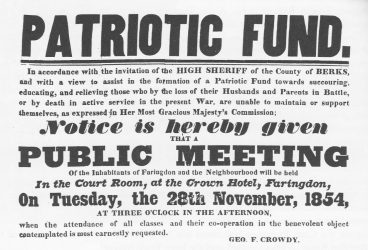 The Royal Patriotic Fund was created in 1854 with Prince Albert as its President. Queen Victoria, concerned for the well-being of the widows and orphans of British servicemen dying in the Crimean War, made an appeal for public donations. In Faringdon, a public meeting was organised to launch the appeal by Mr George Frederick Crowdy in the Court Room of the Crown Hotel. The fund continued after the war but as casualties mounted in the South African War more support was demanded from the national treasury. In 1901, the government finally granted state-funded pensions to war widows.4
The Royal Patriotic Fund was created in 1854 with Prince Albert as its President. Queen Victoria, concerned for the well-being of the widows and orphans of British servicemen dying in the Crimean War, made an appeal for public donations. In Faringdon, a public meeting was organised to launch the appeal by Mr George Frederick Crowdy in the Court Room of the Crown Hotel. The fund continued after the war but as casualties mounted in the South African War more support was demanded from the national treasury. In 1901, the government finally granted state-funded pensions to war widows.4
Boer Wars (1880-1881 & 1899-1902)
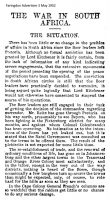
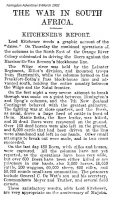
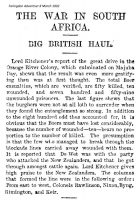 The Boer Wars were fought in South Africa between the United Kingdom and the self-governing Afrikaner (Boer), formerly Dutch colonies of South Africa over the British Empire’s unwanted influence. The trigger of the second war was the discovery of diamonds and gold in the Boer states and the farmers were reluctant to give up their land. The final defeat of the Boers led eventually to all the colony states joining up to form the Union of South Africa in 1910. Many policies for racial segregation were started at this time, leading to full apartheid being instigated in 1948.
The Boer Wars were fought in South Africa between the United Kingdom and the self-governing Afrikaner (Boer), formerly Dutch colonies of South Africa over the British Empire’s unwanted influence. The trigger of the second war was the discovery of diamonds and gold in the Boer states and the farmers were reluctant to give up their land. The final defeat of the Boers led eventually to all the colony states joining up to form the Union of South Africa in 1910. Many policies for racial segregation were started at this time, leading to full apartheid being instigated in 1948.
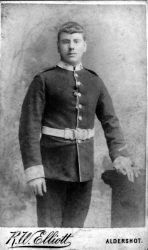
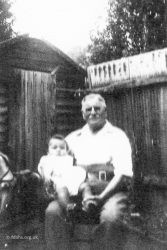 William Goodenough of Faringdon in around 1890 prior to going to war. He survived to have a grandson (Roger Dimmock) as shown here with him in the late 1940s.
William Goodenough of Faringdon in around 1890 prior to going to war. He survived to have a grandson (Roger Dimmock) as shown here with him in the late 1940s.
References:
- Volunteers in 1799 – Faringdon Advertiser 8 March 1902.
- The Rifles, Berkshire and Wiltshire Museum – https://www.thewardrobe.org.uk/research/history-regiments/militia-volunteers-and-territorial-army
- Directory & Gazetteer of Oxon, Berks & Bucks – Dutton, Allen & Co 1863.
- The National Archives – Royal Patriotic Fund – https://discovery.nationalarchives.gov.uk/details/r/C16154
- Ensign George Frederick Crowdy’s sword, currently owned and information provided by John Last of Oxford, collector of militaria for Oxfordshire.
Researched and compiled by Ian Lee, November 2020.
